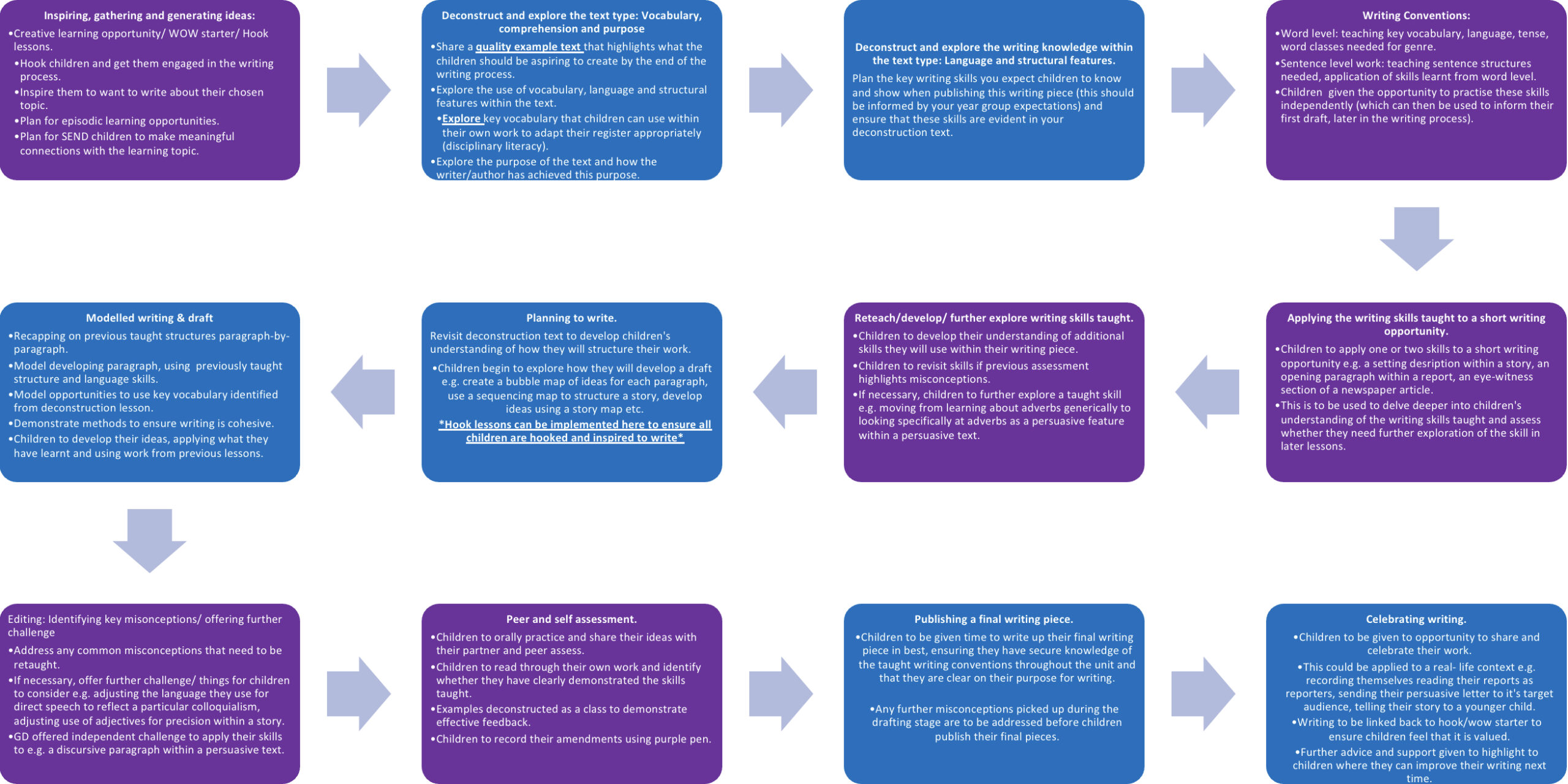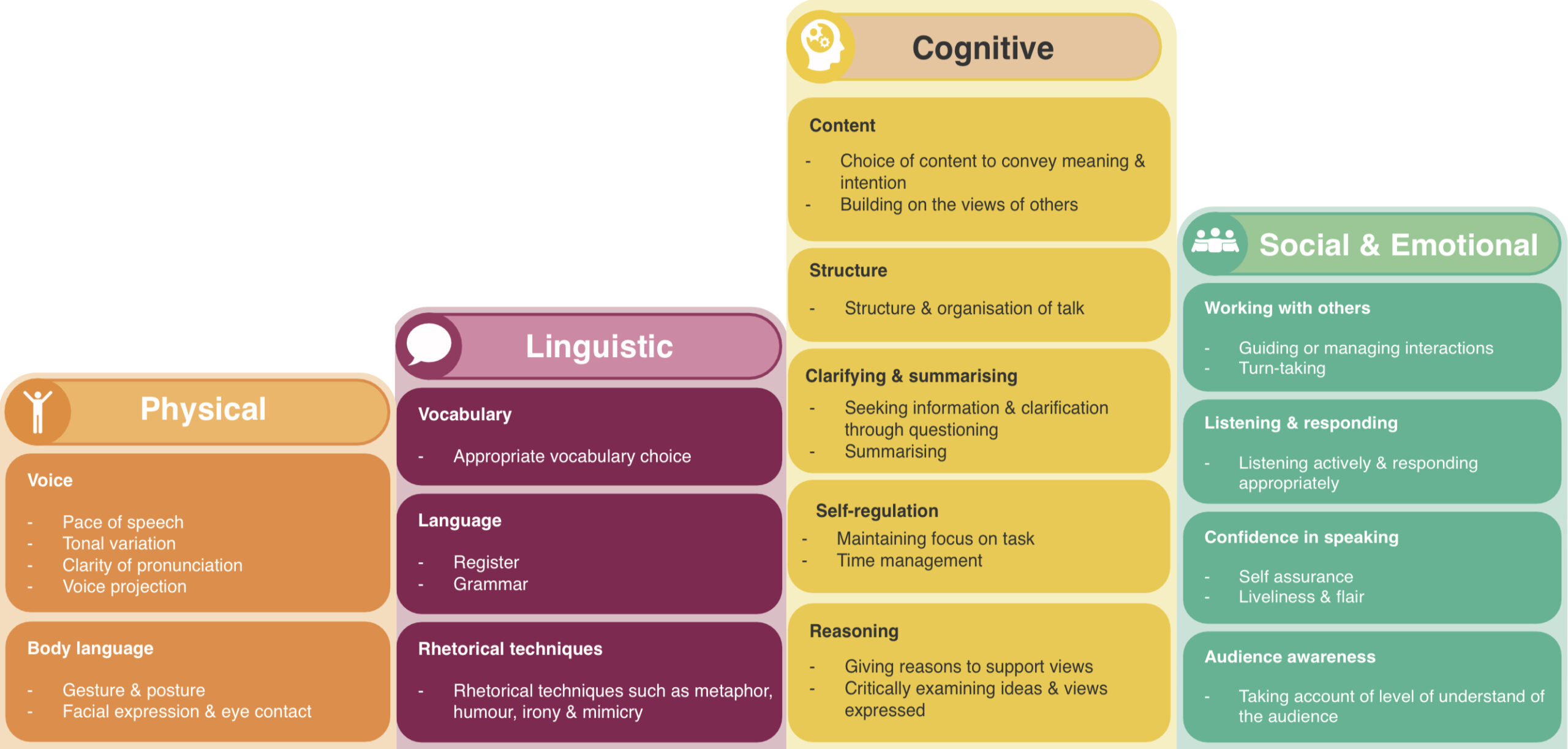English
Our English Curriculum is designed and sequenced so that our children leave Slade with the confidence and motivation to express themselves effectively. We understand that, in order for them to do so, both in further education and the wider world, the English curriculum must be structured (providing children with the opportunity to know progressively more about various genres, writing conventions and writing purposes) and supportive (providing children with a safe space, where they can express their ideas freely and improve those ideas based on self assessment, peer assessment and teacher assessment). For children at Slade to be successful, we believe that opportunities to express their ideas in written form and orally are imperative, and our curriculum reflects this.
Emergent
At Slade, we support our children during the pre-emergent writing phase, where they explore mark making using different media. From this, they then progress to ‘emergent writing’, where they begin to understand that writing is a form of communication and that they can explore this by drawing and scribbling. At this stage, children begin to assign meaning to the marks they make and we encourage our children to explain what they are writing or drawing. Our teachers support and encourage each individual child to develop the early skills that will allow them to become proficient writers when they are older. Exciting interactive writing opportunities are placed throughout our Early Years environment, which instantly attract the children’s interest and keep them engaged. These include gross and fine motor activities, which help strengthen the muscles in the arms, fingers and thumbs in preparation for when they begin writing. Examples of activities include:
- Twirling ribbon sticks in large circular motions
- Cooking and mixing ingredients in a bowl
- Using tweezers and hole punchers
- Using scissors to cut different types of materials
- Manipulating play dough and encouraging children to pinch, squeeze and roll
- Mark making using large chalk outside
- Tracing over chalk patterns with a paintbrush and water
- Drawing in glitter/flour/foam
- Writing opportunities in the role play area so children can write for a purpose
- Our writing station which has a variety of writing equipment, such as felt tips, crayons, coloured paper, envelopes, post-its, whiteboards, chalk boards etc.
- Drawing apps on the iPad
- Painting
Conceptual knowledge:
At this stage of the writing process, children begin to understand that writing has a purpose. Logos, with writing that will be likely be known by the children, such as ‘McDonalds’ and ‘Greggs’ are displayed around our Early Years environment to help them to recognise that words have meaning. At Slade Primary, children in both Nursery and Reception explore a book each week or every fortnight and the teacher models and scaffolds writing. We have found that this inspires children to engage in the exploration of mark making as they are able to write for a purpose. Children have access to the book, pictures from the book as well as word mats with widget pictures to help support their writing. Further opportunities are provided both inside and outside of their classroom for example, displaying car brochures and road signs so that children can create their own road signs for the large trucks outside or the cars in the small world inside. This helps expose children to print as much as possible and supports them with their own writing.
Procedural knowledge:
This is the next stage of the writing process: it is when children develop their technical skills and learn how to write letters and words. At this stage, children will learn to recognise their name. A self-registration board allows the children to quickly become familiar with it, which then leads on to them learning how to write their name. We encourage this using different types of resources from writing in glitter to using ear buds dipped in paint. An important part of this process is teaching the children how to form letters and the sounds associated with each letter. From the start of Autumn term one, our teachers introduce the children to the Read, Write, Inc scheme, where Fred Frog helps them to learn their sounds and how to write them. With only access to a few sounds, children learn how to spell and write simple words (CVC words such as cat, pin, mat). Their ability to write more words increases as they learn more sounds. Children are able to use the phonics resources to make their own words and our environment is permeated with writing opportunities, where children are encouraged to use their growth mindset to ‘have a go.’ Children have a focus writing activity once a week and when they are at this stage of the writing process, they are encouraged to use their phonics knowledge to write simple words independently. Children can then successfully apply the skills taught within the environment. Computing is also a big part of the Early Years curriculum and children often use iPads to help develop their writing. For example, they might use it to take a picture of something and label it or to write a list of ingredients for a recipe they are going to make.
Generative knowledge:
At this stage in their development, children are able to write simple sentences. They now are explicitly exposed to different types of texts, such as information texts, and encouraged to write sentences for a particular purpose. An example of this may be planting and growing seeds, taking pictures of each step and using simple sentences to write a set of instructions. Children are encouraged to write independently however, they are only able to do so once they begin to generate ideas by themselves. To overcome this challenge, our teachers plan plenty of opportunities, which allow the children to communicate and express their ideas. These opportunities vary, from whole class, small groups and with partners. Within these opportunities, children are taught the skills to be able to talk with confidence. By formulating ideas in their head first, the children can then successfully communicate this in their writing independently. During carpet sessions, children express their ideas to their partner and have opportunities to orally rehearse, then write their sentence. Exciting continuous provision activities in our environment, allow the children to further their writing skills and positive feedback from our teachers, mean that all children are confident and equipped with the writing skills needed for Year One.
English Curriculum:
Our children are also exposed to a wide range of texts and taught the spelling, punctuation and grammar skills required during their Read, Write Inc. sessions. Once children have completed the Read Write Inc programme and can demonstrate their knowledge of the taught sounds, they begin to further explore the writing process and are exposed to a wide range of genres, writing techniques and writing purposes. Children are exposed to at least one fiction and one non-fiction text type per half term, as well as exploring different types of poetry. They are given opportunities to write across the curriculum and follow a systematic approach to creating a piece of writing.
Writing Units:
Our English Curriculum follows a structured approach, that provides our children with a step-by-step guide to creating pieces for a variety of different genres, writing purposes and target audiences. A typical English unit at Slade is structured as follows:

Within this writing approach, there are opportunities for children to:
- Work co-operatively with peers of different writing abilities to deconstruct different text types, explore new vocabulary and the writing conventions required for that particular text type.
- Assess their own and their peers writing to edit and improve throughout the writing process.
- Have access to a wide range of high-quality reading materials that serve as models for their writing.
- Be explicitly taught the age-appropriate writing conventions for each text that they cover, in the context of which they are learning them.
- Draft, edit and improve their final writing pieces.
- Celebrate their efforts and publish their writing creatively.
Oracy:
At Slade, we ensure that our English curriculum provides our children with the opportunity to express themselves effectively, both in written and spoken form. We understand that in order to for our children to leave Slade with the tools to fully express themselves, these tools need to be taught explicitly. This includes the explicit teaching of oracy. Oracy involves explicitly teaching children to become more effective speakers and listeners. This, in turn, will then empower them to better understand themselves, each other and the world around them. It is also a route to social mobility, empowering all students, not just some, to find their voice to succeed in school and life. Throughout our curriculum, children are explicitly taught the physical, linguistic, cognitive, social and emotional skills that enable successful discussion, inspires speech and effective communication.

Handwriting:
In order to ensure that our children learn to write in a joined and legible style, we believe that they must be constantly exposed to the expected standard of handwriting, have opportunities to explicitly practise their handwriting and be given explicit feedback on what they can do to improve.
To do so, we use the Letter-join Handwriting Scheme.
The scheme allows us to use a consistent handwriting font in all classrooms, with all the devices used to teach having it installed. This ensures that the expected handwriting standard is displayed in all lessons, on any worksheets used or sent home and on any resources shared with our children electronically.
Letter formation:
Throughout the provision and during taught lessons, children in EYFS and Key Stage 1 are exposed to the following handwriting font:

Individual letters are spaced apart to allow children the opportunity to practise their letter formation and the exit movements required to eventually join their letters together.
Please model this font with your children whilst supporting them to form their letters at home.
Joining letters:
If not already joining, from year 3 onwards, our children are explicitly taught to join their letters using the following letter style:

